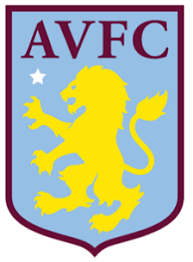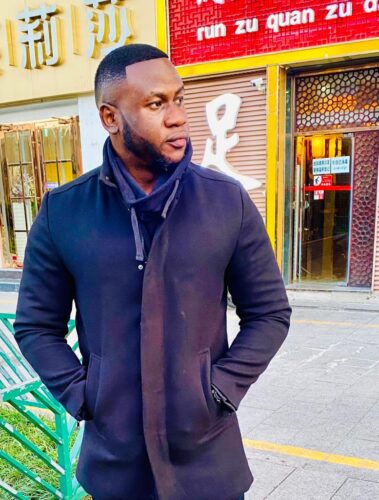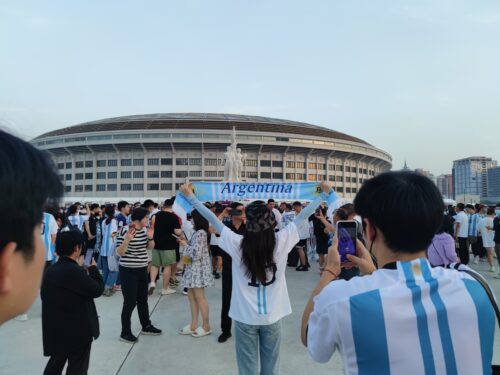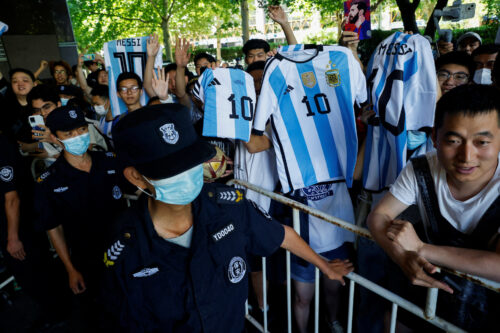The decline of Aston Villa under its enigmatic Chinese owner
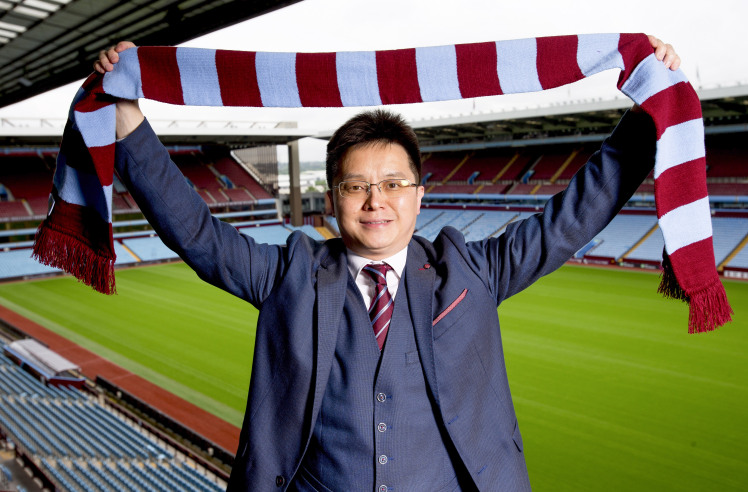
Two years ago, Chinese entrepreneur Tony Xia bought Aston Villa, once one of the most famous English football clubs in the land. But massive overspending on player transfers and wages, plus a failure to win promotion to the English Premier League, has put the club in peril, with a tax bill finally paid this week to stave off financial ruin — for now.
There was an indication a couple of months into Tony Xia’s reign at Aston Villa that fans would be in for a rollercoaster ride like none they’d ever witnessed. A fan going by the name @thisispreece on Twitter sent Xia a picture of Jimmy Savile with the request, “Can I get a RT for my Uncle Jimmy? It would have been his 80th birthday.”
Xia promptly obliged, oblivious to the fact that “Uncle Jimmy” was in fact a former BBC presenter turned serial child molester.
He’s not the first person to have been fooled by such a prank — Donald Trump was once tricked into retweeting a picture of serial murderers Fred and Rose West — but Xia, to his credit, has continued to stay engaged with fans on Twitter despite that initial baptism of fire, addressing criticism head-on and, on occasion, giving as good as he got.
He’s mixed humor with passion, along with healthy doses of optimism (and the odd bit of nonsense), but crucially he’s stayed connected to the club’s vociferous fan base.
It’s proven to be a sound move for another reason: with the club on the verge of financial meltdown and Xia’s carefully crafted public facade seeping away in recent days, he still — like Trump — enjoys unwavering support from a certain section of his supporters.
Surprising similarities between @Dr_TonyXia and @realDonaldTrump. Both:
1. Use Twitter as main form of communication.
2. Publicly berate journalists.
3. Have been duped into RTing pic of serial attacker.
4. Are brilliantly successful businessmen.— Mark Dreyer (@DreyerChina) June 8, 2018
Unfortunately, that’s where the good news ends for Xia. The questions that have existed since he appeared from nowhere two years ago have never been answered, and the red flags have only grown brighter with time.
How was a self-proclaimed dollar billionaire — “It’s rather more than that,” he famously said — able to fly so far under the radar that virtually no one in China had ever heard of him? With some of his claims patently untrue, how much falsehood had also crept into the rest of his story — especially his financial situation? Why did he buy Aston Villa and did he use his own money, or was he just a front? Did he even have the money in the first place?
With funding sources from China reportedly drying up in recent months, Xia’s credibility has once again come into question.
Xia has been associated with three main companies, the Shanghai-listed Lotus, which manufactures food supplement MSG and other condiments, plus two companies listed in Shenzhen: Teamax, a smart city planning and construction firm, and cable manufacturer Recon.
Lotus has been losing money consistently for the past 15 years, with those in charge blaming old equipment and too many employees (without appearing to rectify either problem). Meanwhile, Xia sold his 18.8 percent holding in Recon earlier this year — shortly before the stock went into freefall, losing more than half its value in a number of weeks. The current boss is listed as Xia Jianjun 夏建军 — rumored to be his brother, not Tony himself (Xia Jiantong 夏建统). As for Teamax, Tony said he sold it for hundreds of millions of dollars prior to buying Aston Villa in May 2016.
In true China fashion, however, it’s virtually impossible to check who Tony Xia really is and how many companies he effectively controls. But simply put, it just doesn’t add up.
There is supposed to be millions sloshing around back home, yet Aston Villa reportedly came within a whisker of a winding up order earlier this week, which would have forced it into compulsory liquidation. Xia’s claim to have fallen in love with the club years ago while in the UK is riddled with holes, and no plausible motivation for buying the club has ever been provided. The remaining options — as Chinese financial experts have started to speculate in private — start with money laundering and descend from there.
If this all sounds like being wise after the event, it’s not. I asked many of these same questions and more when Xia first burst onto the scene. But it wouldn’t be fair to paint this as solely a Chinese story. With the likes of Keith Wyness and Chris Samuelson — both of whom are still deeply unpopular with fans of previous clubs they’ve worked at — closely involved during Tony’s reign, there are plenty of places to point the blame.
Another obvious place would be the English Football League, which signed off on this house of cards two years ago, and have watched silently as one of England’s greatest clubs — seven league titles, seven FA Cups, and one European Cup — plunge headlong to its ruin.
The big defense is that Xia has all the money in the world but just can’t get it out of China. But capital controls have been loosening in recent months, not tightening. Foreign exchange reserves have been increasing, so the People’s Bank of China has allowed more money to flow outside the country. Besides, no official policy has changed in about a year, so if it’s truly the case that Xia can’t access his money, Villa’s predicament can only be described as rank mismanagement — and that’s a best-case scenario.
With so many questions remaining unanswered, it’s only natural that fans’ patience is running thin. Expect open hostility if Xia isn’t able to plug his leaking ship soon.
The China Sports Column runs every Friday on The China Project. Follow Mark Dreyer @DreyerChina
